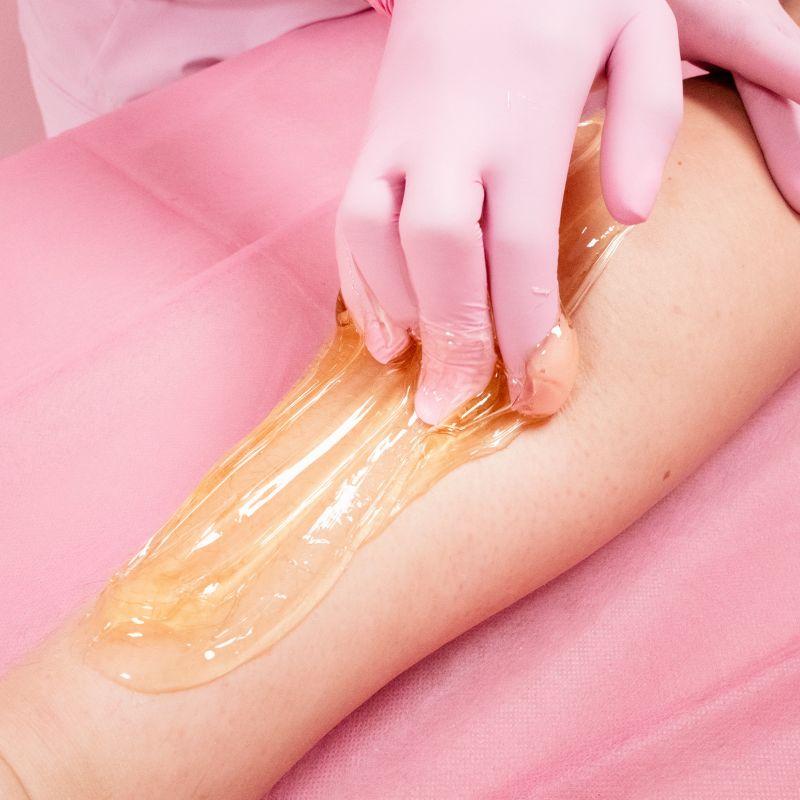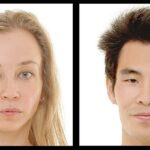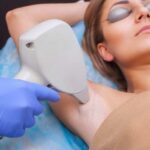Imagine a world where the first flowers of spring aren’t just a signal to dust off your favorite sundress, but also a reminder to schedule your next sugaring appointment. In an era where beauty trends flicker in and out of vogue like a firefly on a warm summer night, one age-old practice is steadily emerging from the shadowy corners of beauty salons into the mainstream light. Sugaring, an ancient hair removal technique boasting roots in ancient Egypt, promises a gentler, more earth-friendly alternative to waxing and shaving. Yet, the question looms large: when will this sweet solution gain the universal acceptance needed to become a routine beauty ritual? Delve with us as we explore the journey of sugaring hair removal — from its storied origins to its modern-day renaissance — and contemplate whether it has what it takes to become the next cornerstone of our grooming habits.
Understanding the Rise of Sugaring Hair Removal
The resurgence of sugaring hair removal isn’t just a passing trend; it’s rooted in a long history of natural beauty solutions. This ancient technique, which originated in the Middle East, uses a blend of sugar, lemon, and water to create a paste that removes hair from the root—without the harsh chemicals found in many modern hair removal products. As consumers become more health-conscious and environmentally aware, sugaring’s natural appeal stands out. It’s not just about the results, but also about using a method that aligns with a more holistic lifestyle.
One of the key factors contributing to sugaring’s rise is **skin sensitivity**. Many people experience irritation and allergic reactions with traditional waxing and shaving products. Sugaring, however, is hypoallergenic and non-comedogenic, making it suitable even for sensitive skin types. Other benefits include:
- **Less Painful:** Sugaring adheres only to dead skin cells and hair, reducing the discomfort experienced during removal.
- **Exfoliating:** The sugar paste acts as a natural exfoliant, leaving the skin smoother.
- **Hygienic:** The paste is water-soluble, making it easy to clean up and less likely to harbor bacteria.
Comparatively, the technique is also more environmentally friendly. Unlike waxing, which requires cloth strips, spatulas, and a considerable amount of energy for heating the wax, sugaring’s simple ingredients mean less waste and lower environmental impact. Moreover, the application and removal process is uncomplicated, often requiring no additional tools or extensive training. This ease of use is encouraging even DIY enthusiasts to give sugaring a try, further popularizing it among those looking for sustainable beauty alternatives.
| Factor | Sugaring | Waxing |
|---|---|---|
| **Pain Level** | Low to Moderate | Moderate to High |
| **Ingredients** | Natural | Often Synthetic |
| **Skin Type Suitability** | All Skin Types | Might Cause Reactions |
The growing popularity can also be attributed to the **efficacy** of sugaring in achieving long-term results. Regular sessions lead to finer and sparser hair growth as the hair is removed from the root. Additionally, because this method can be less painful and more forgiving on the skin, it encourages consistent upkeep. With the increasing endorsement by skin care professionals and beauty influencers, sugaring hair removal is steadily embedding itself into mainstream beauty routines, poised to become as commonplace as waxing and shaving in the near future.

Exploring the Benefits Over Traditional Methods
One of the most compelling reasons to consider sugaring over traditional hair removal methods is the natural composition of the sugaring paste. Unlike conventional methods that might utilize synthetic chemicals and artificial fragrances, sugaring paste typically consists of simple, organic ingredients like sugar, lemon juice, and water. This **chemical-free approach** is advantageous for individuals with sensitive skin or those prone to allergies.
Apart from its natural formulation, sugaring significantly reduces the risk of skin irritation. Traditional waxing often adheres to live skin cells, which can lead to redness and discomfort. In contrast, sugaring only binds to dead skin cells and hair. This results in an effective exfoliation process that leaves the skin feeling **smooth and revitalized**.
Another notable advantage is the less painful experience that sugaring offers compared to other methods. Traditional waxing can be an ordeal due to the trauma inflicted on the skin. However, since sugaring paste is applied at body temperature and removed in the direction of hair growth, it leads to a much **more comfortable hair removal process**. This makes sugaring a preferable option, particularly for those with a low pain tolerance.
- Natural ingredients: Sugar, Lemon Juice, Water
- Skin-friendly: Less irritation, Exfoliating benefits
- Less painful: Body temperature paste, Removed in the direction of hair growth
In terms of results, sugaring provides longer-lasting smoothness compared to shaving and even some waxing techniques. The method not only removes hair at the root but also diminishes hair growth over time. As a result, enthusiasts often observe a **sparser regrowth** of finer hair, reducing the frequency of hair removal sessions.
| Aspect | Sugaring | Traditional Methods |
|---|---|---|
| Ingredients | Natural | Synthetics/Chemicals |
| Pain Level | Lower | Higher |
| Skin Irritation | Minimal | Possible high |
| Hair Regrowth | Sparser | Unchanged |
Challenges and Misconceptions to Expect
Sugaring hair removal may seem like a dream come true, but there are several **challenges** and **misconceptions** to be aware of before it becomes part of your routine beauty regimen. Understanding these barriers is key to navigating them effectively and setting realistic expectations.
- Pain Tolerance: Sugaring is often touted as a less painful alternative to waxing, but pain can still be an issue, especially for those with low pain tolerance. While some people find the method more comfortable, individual experiences can vary greatly.
- Skin Sensitivity: For people with sensitive skin, the natural ingredients in sugar paste are usually gentler, but reactions can still occur. It’s crucial to do a patch test before committing to a full session to avoid unexpected irritations.
- Regrowth Timing: Hair needs to be at least 1/8 inch long for sugaring to be effective, which can mean dealing with visible stubble during regrowth phases. This might not be ideal for everyone, especially those used to shaving more frequently.
There are also common **misconceptions** that can lead to disappointment or improper expectations:
| Misconception | Reality |
|---|---|
| Sugaring is completely painless. | While often less painful, it still involves pulling hair from the follicle. |
| It works for all hair types. | Best for fine to medium hair; thick, coarse hair can be more resistant. |
| You don’t need as much growth as for waxing. | Hair must be at least 1/8 inch, similar to waxing requirements. |
Another challenge is finding a **reliable practitioner**. Not all estheticians have the necessary training and experience in sugaring, which can impact the effectiveness and comfort of the treatment. Make sure to research and choose a professional who specializes in sugaring and has positive client feedback.
**maintenance and aftercare** often catch people by surprise. Proper aftercare, including exfoliation and moisturizing, is key to preventing ingrown hairs and irritation. Unlike other hair removal methods, sugaring promotes long-term skin health, but it demands a consistent care routine to achieve these benefits.

Expert Tips for a Seamless Sugaring Experience
Sugaring hair removal is a gentle and effective technique that, with the right approach, can easily fit into your regular beauty routine. To achieve the best results, it’s essential to follow some expert advice that ensures a smooth and hassle-free experience. Below are some invaluable tips to help make your sugaring sessions a breeze.
- Prepare Your Skin: Begin by exfoliating your skin a day before your appointment. This helps remove dead skin cells and allows for better adherence of the sugar paste to the hair. Avoid applying lotions or oils to the skin, as they can create a barrier.
- Optimal Hair Length: For the best sugaring results, ensure that your hair is about 1/8 to 1/4 inch long. This length is ideal for the sugar paste to grip the hair effectively, making the removal process more efficient and less painful.
- Stay Hydrated: Drink plenty of water before and after your sugaring session. Hydrated skin is more pliable and less likely to become irritated during the process, contributing to a smoother finish.
- Post-Sugaring Care: After your session, avoid activities that cause heavy sweating, such as intense workouts or saunas, for at least 24 hours. Wear loose clothing to prevent irritation, and use aloe vera or a gentle moisturizer to soothe the skin.
Implementing these expert tips can significantly improve your sugaring experience, allowing you to embrace smoother skin with fewer complications. If you’re curious about the specifics of your aftercare routine, investing in appropriate aftercare products is also beneficial. Here’s a quick comparison of popular post-sugaring items:
| Product | Benefit |
|---|---|
| Aloe Vera Gel | Soothes and hydrates |
| Witch Hazel | Reduces inflammation |
| Chamomile Lotion | Calms irritated skin |
Incorporating these tips into your routine can make sugaring a seamless part of your beauty regimen. With proper preparation, the right hair length, hydration, and thoughtful aftercare, you’ll find that sugaring fits naturally into your daily life, delivering consistently smooth and healthy skin.

Establishing Sugaring as a Personal Care Staple
Sugaring, a hair removal method that dates back to ancient civilizations, is gaining traction as a modern-day personal care staple. Its appeal lies in its simplicity and effectiveness, offering a natural alternative to chemical-laden products. While waxing and shaving have dominated the hair removal scene, sugaring is quietly making its case for mainstream adoption due to several compelling benefits.
Among the standout perks of sugaring, **natural ingredients** are at the forefront. Unlike conventional hair removal creams brimming with synthetic components, sugaring paste is made from **sugar, water, and lemon juice**. This purity makes it gentle on the skin, reducing the risk of irritation and allergic reactions. Environmental enthusiasts also favor sugaring for its minimal ecological footprint, as it eschews plastic applicators and excessive packaging.
| Method | Primary Ingredients | Skin Impact |
|---|---|---|
| Sugaring | Sugar, Water, Lemon Juice | Gentle, Less Irritation |
| Waxing | Resin, Oils | Moderate, Potential Irritation |
| Shaving | None | Surface Level, Frequent Use |
Another aspect that sets sugaring apart is its **efficiency and effectiveness in hair removal**. The paste adheres only to the hair and dead skin cells, allowing for a thorough and less painful extraction process compared to waxing. Users have reported that regular sugaring leads to finer, sparser hair regrowth over time, making maintenance less frequent and more manageable.
The accessibility and ease of sugaring have been further enhanced with **DIY kits and professional services**. Whether you choose to make your own paste at home or visit a specialized salon, the flexibility of sugaring suits various preferences and schedules. As more people discover its myriad benefits, it’s only a matter of time before sugaring becomes a go-to routine in personal care regimens.
Q&A
Q: What is sugaring hair removal?
A: Sugaring hair removal is a natural, ancient method of removing unwanted hair using a paste made from sugar, water, and lemon juice. This paste is applied to the skin and then quickly removed, taking the hair with it.
Q: How does sugaring hair removal differ from other methods like waxing or shaving?
A: Unlike waxing, which adheres to both the hair and skin, sugaring paste only adheres to the hair, reducing the risk of skin irritation. Compared to shaving, sugaring removes hair from the root, providing longer-lasting results and reducing the chance of ingrown hairs.
Q: What are the primary benefits of sugaring hair removal?
A: Sugaring is known for being gentle on the skin, using all-natural ingredients, and offering longer-lasting results than shaving. It also tends to be less painful than waxing because it doesn’t stick to live skin cells.
Q: Are there any drawbacks to sugaring?
A: Some potential drawbacks include discomfort during the procedure, similar to other hair removal methods, and the need for hair to be a certain length for effective removal. Additionally, it may not be as readily available as waxing or laser treatments in some areas.
Q: How long does it take for hair to grow back after sugaring?
A: Generally, hair takes about 3 to 6 weeks to grow back after sugaring. However, this can vary based on individual hair growth cycles and how frequently the sugaring is performed.
Q: Is sugaring suitable for all skin types?
A: Sugaring is typically suitable for all skin types, including sensitive skin. Its use of natural ingredients makes it less likely to cause allergic reactions or irritation.
Q: What factors could influence the routine adoption of sugaring hair removal?
A: Factors that could influence sugaring’s routine adoption include increased awareness and education about its benefits, greater availability of professional services, the development of easy-to-use at-home kits, and a shift towards natural and holistic beauty practices.
Q: When do experts predict sugaring hair removal might become routine?
A: Experts suggest that as consumers continue to seek gentler, more natural hair removal methods, sugaring could become routine within the next 5 to 10 years. Increased demand could drive more salons and at-home product lines to offer sugaring options.
Q: Can sugaring be done at home, or is it best left to professionals?
A: While sugaring can be done at home with the right preparation and technique, beginners might find it easier to start with a professional service to understand the proper method. Over time, with practice, many people successfully transition to DIY sugaring.
Q: How can someone start incorporating sugaring into their beauty routine?
A: To start incorporating sugaring into your beauty routine, consider scheduling a professional session to experience the technique and results first-hand. Then, if desired, explore reputable at-home kits and tutorials to continue the practice on your own.
Q: Is there any cultural significance to sugaring hair removal?
A: Yes, sugaring has a rich cultural history, dating back to ancient Egypt and the Middle East, where it was a popular method for achieving smooth, hair-free skin. This historical context adds a layer of tradition and authenticity to the practice.
Q: How do environmental factors play a role in the popularity of sugaring?
A: The all-natural, biodegradable ingredients used in sugaring align well with the growing environmental consciousness among consumers. As people become more eco-aware, methods like sugaring, which have minimal environmental impact, may increasingly gain favor.
Q: Are there any misconceptions about sugaring?
A: Some common misconceptions include the idea that sugaring is overly complicated or more painful than waxing. In reality, with the right technique, many find sugaring simpler and less painful. Additionally, the perception of it being “new” despite its ancient origins can lead to skepticism, but its longstanding use speaks to its effectiveness.
By exploring these questions and answers, readers can gain a comprehensive understanding of sugaring hair removal and why it may soon become a staple in many beauty routines.
Concluding Remarks
As we navigate the waxing and waning fads of beauty and self-care, the sweet allure of sugaring reveals itself as more than just a fleeting indulgence. For centuries, it has quietly persisted, a testament to its gentle efficacy and natural appeal. Whether it becomes a staple in our modern grooming rituals remains suspended in the hands of time, personal preferences, and evolving beauty norms. But one thing is certain: the ancient art of sugaring will always be there, ready to offer its timeless embrace to those who seek it. In a world of endless possibilities, sometimes the sweetest solutions are the ones that have been waiting for us all along.






